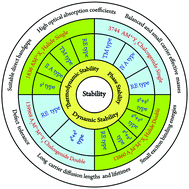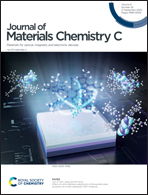Searching for stable perovskite solar cell materials using materials genome techniques and high-throughput calculations
Abstract
Despite the rapid development of power conversion efficiencies, the commercialization of the emerging organic–inorganic hybrid perovskite solar cells still faces significant challenges. The major issues are their poor long-term stability and toxicity. In light of this, materials design and screening of novel stable perovskites is becoming a surging research direction. In contrast to conventional trial-and-error processes, materials genome techniques and high-throughput calculations have been prevalently applied in this area and accelerated materials discovery. Here, we present a review that summarizes recent progress in this field, which mainly focuses on four classes of perovskites including AM2+X3 halide single perovskites, AM4+Y3 chalcogenide single perovskites, A2M+M3+X6 halide double perovskites and A2M3+M5+Y6 chalcogenide double perovskites. The stability, electronic, optical, and defect properties are extensively discussed for each class of these perovskites, and their applicability as solar cell absorbers has also been commented on.

- This article is part of the themed collection: Journal of Materials Chemistry C Recent Review Articles


 Please wait while we load your content...
Please wait while we load your content...